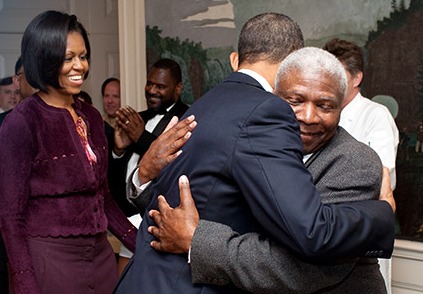The following is a guest post by Beth Kelly.

In the years ahead, America will experience a considerable growth in its population of seniors above the age of 65. Changes in the country’s age structure will affect all aspects of our society, as this demographic transition means new responsibilities for families and medical professionals, as well as the national government. With the number of seniors set to nearly double by 2050 there are numerous issues on hand that demand immediate attention.
On Monday, President Obama attempted to address many of these concerns at the sixth White House Conference on Aging. Using the event as an opportunity to recognize the fact that our nation is graying at an ever-increasing pace, he shone a spotlight on perhaps the biggest challenge associated with this massive age shift: access to proper health and nutritional assistance for all who need it. Of course, for the 25% of older individuals with diabetes and their caretakers, this is a topic of very special importance.
In prior years the WHCOA has served to zealously urge older adults to “exercise, eat right, and socialize”, largely placing health-related responsibilities on the shoulders of seniors themselves. At the 2015 event, however, the need for stronger federal initiatives and better state-level policies and programs received greater (and much needed) attention. Basic caregiving support, essential to good public health, is severely underfunded and unrecognized to the point at which many elderly diabetic people’s lives are at risk. Caregivers themselves face the problem of completing daily tasks effectively and compassionately, while preserving their own health amidst the stressful and trying circumstances presented by a chronic disease.
Most older diabetic adults will eventually require some level of basic daily living assistance. As such, the availability of long-term home health services is key. A study completed by University of California-San Francisco researchers recently estimated that at least 2.5 million additional health and personal care aides will be needed to accommodate the needs of aging seniors by 2030. In his brief on the topic of long-term care, the President stressed the importance of support for caretakers, pledging $50 million in new funding for aging programs which focus on care providers themselves. Another major health-related announcement came in the form of a proposed rule from the Centers for Medicare and Medicaid Services, which aims to overhaul and improve the quality of care given to seniors in nursing homes.
Sylvia Burwell, Secretary for the Department of Health and Human Services, also spoke at the conference to urge Congress to reauthorize the Older Americans Act, which expired in 2011. The law would provide funding for many senior services and senior centers. President of the board of the National Area Agencies on Aging (n4a), Joe Ruby, spoke out saying he was “especially happy” to hear that Obama would be working with Congress to reauthorize the Older Americans Act. Many attendees, however, felt that not enough attention was given to the fact that health research funding also continues to fall far below what’s needed to combat the continual rise in chronic conditions among Americans.
Months of public discussion led up to the event, which received no public funding (a change from prior years) and instead used technology and social media to unite interested participants and viewers. Over 600 “watch parties” were held nationwide, and thousands more tuned in to view the conference online. Because there were zero appropriations for thousands of older people to flood the conference floor with their ideas and arguments, the conference had to “come to them” as a virtual experience.
The topic of seniors and technology received some attention from the President, who touched on the digital and communication technologies which present numerous opportunities for older individuals. While numerous advancements in the diabetic technology space and the increased automation of health and home security systems succeeds in relieving some of the burden from care providers, better technology for seniors is not a panacea. But experts in aging tend to agree that digital innovations can help the elderly stay connected to relatives, caregivers, and healthcare providers, helping them access critical services and remain independent for longer.
“As long as you can keep moving, you can keep kicking” – words of advice from one attendant stressed the importance of physical activity and exercise among older adults, words which ring especially true for those with diabetes. At the WHCOA event, the National Institutes of Health showed their support for plans which aim to increase the fitness levels of seniors. Through its Go4Life exercise and physical activity campaign, the NIH is funding activities and educational materials to promote healthy nutrition and physical activities.
The purpose of the WHCOA is primarily to give a voice to the seniors in our communities, whose health and financial problems are also our own. As thousands of “boomers” enter old age every day, there must be action from younger generations to ensure that those in their golden years aren’t neglected. With the next conference another ten years away, its important to keep the conversation going. You can share your own input on the future of healthy aging in America by commenting with the #WHCOA hashtag on Twitter, getting involved on Facebook, or sending comments directly to info@whaging.gov.
